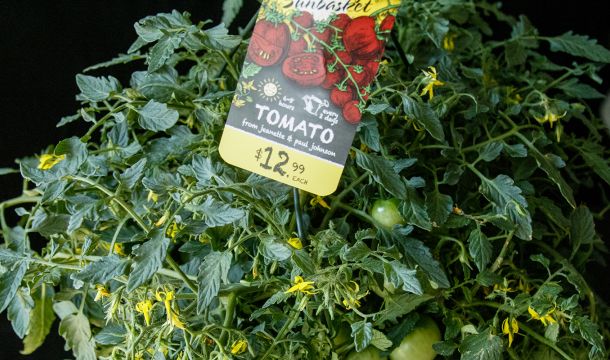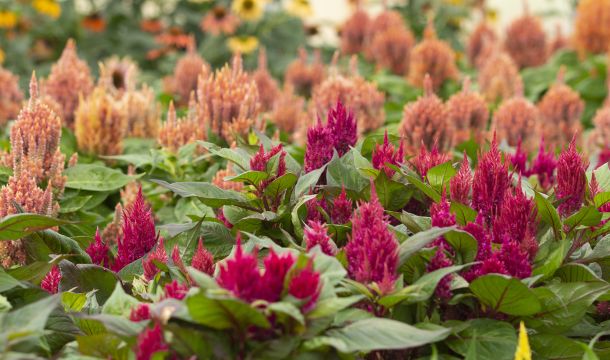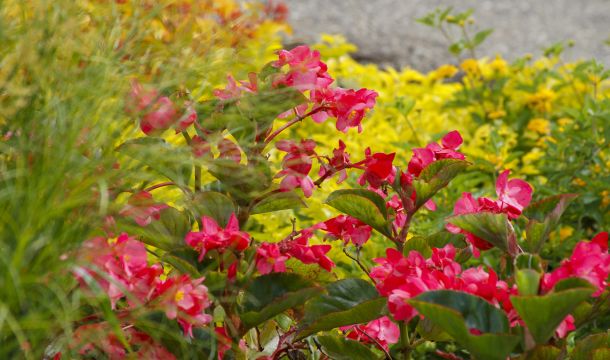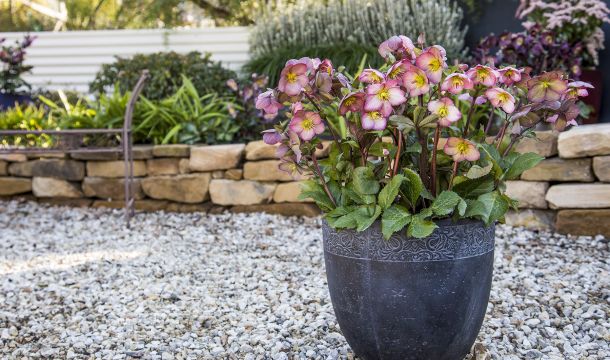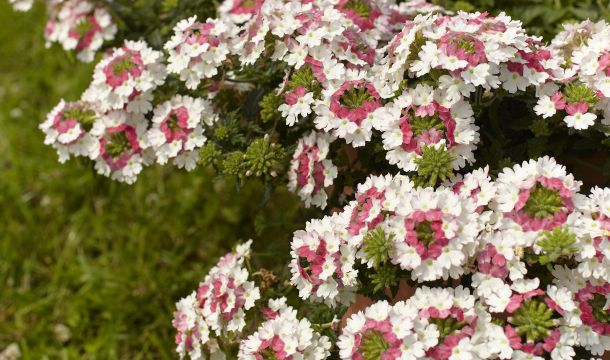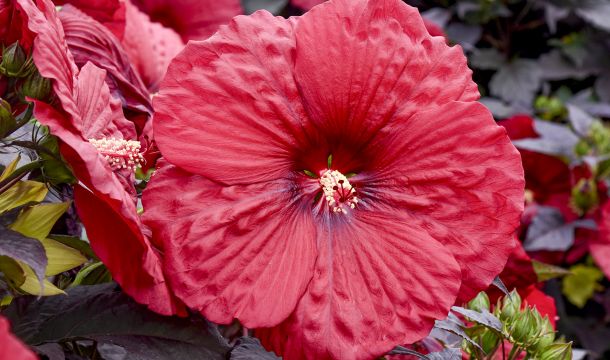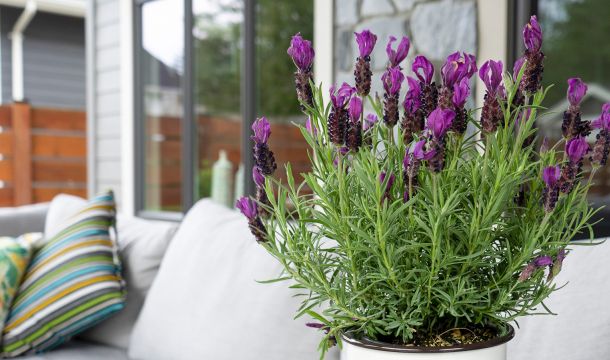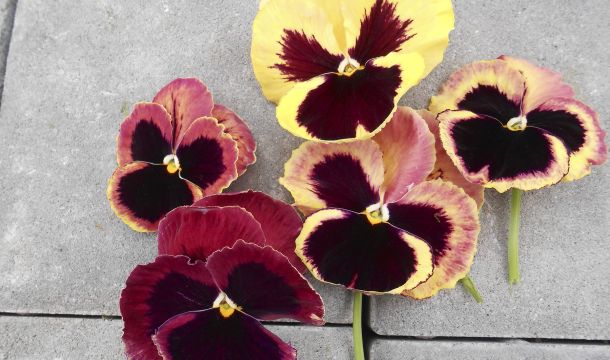Oreganos Ornamentally
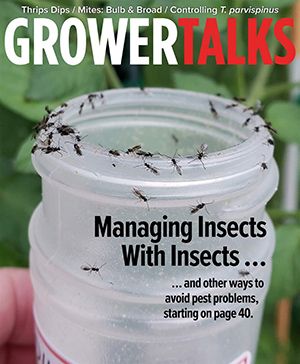
If you need a low-cost perennial that lasts year-over-year in decorative pottery, urns, and other above-ground plantings, consider the ornamental oreganos. Don’t conflate them with ornamental thyme. Oreganos are too bulky and woody underfoot to fill the groundcover and walkway roles that thyme performs. However, these very features become strengths when oreganos drop into baskets and pottery for most places in the United States. Oreganos handle the hot, dry soils of summer as well as the cold, desiccated soils of winter.
As a rule, ornamentals present neater habits and dense mounds with either trailing or upright tips. Color in oreganos comes through the petal-like leaves, called bracts, that surround their tiny flowers. In ornamentals, these bracts are large and show off color from midsummer to early fall, filling companion baskets to summer crops of ornamental peppers or millets. Most oreganos are hardy to Zone 5 with a couple of exceptions on either side. They prefer full sun and light watering, as root rot comes easily to them.
When blooming out common oregano, "vulgare" is really more of a shrug. Depending on its background, the bloom can anything within the species' wheelhouse.
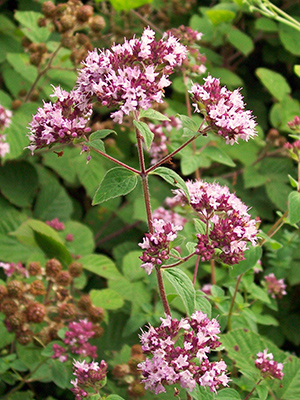 |
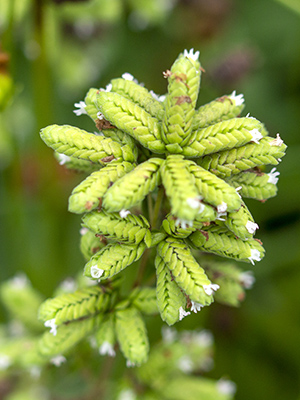 |
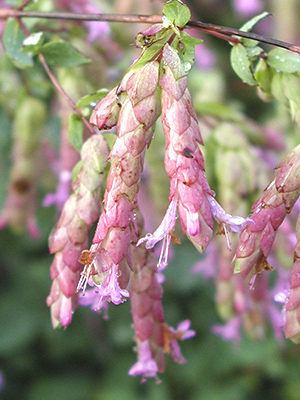 |
| vulgare | vulgare | vulgare |
Vulgar Ones
Generally zone 5, a common mature oregano has a split personality: flat like a groundcover and upright like a standard perennial during the blooming season. Leaf stems and flower stems are both thin, strong, and wiry, but differ on how they hold themselves on the plant.
Leaf stems like to lie along the ground, covering it with a number of branches from the crown, while flower stems lift high into the air. Leaf bracts develop at the tips of the flower stems. These protect tiny, creamy white blossoms. When it goes to seed, the plant forms what look like little peppercorns.
Oreganos are highly durable, easily surviving winters as perennial additions. You may know the popular varieties: Greek, Hot & Spicy, and Italian. They are generally found in the species Origanum vulgare with some exceptions.
True to its name, variegata colors will wander around. When the leaves mature, they go golden. 'Country Cream' is the variety with the clean white margins. It has a ball-style bloom rendered in white.
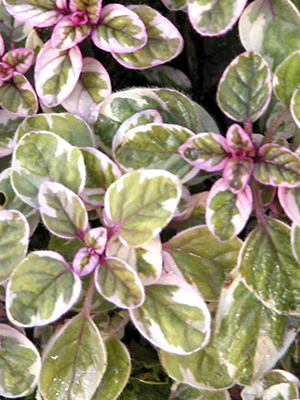 |
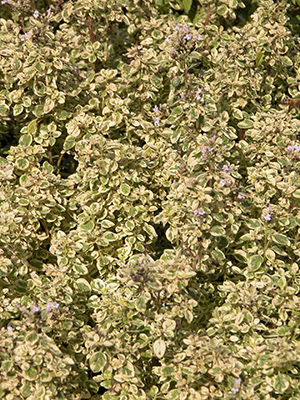 |
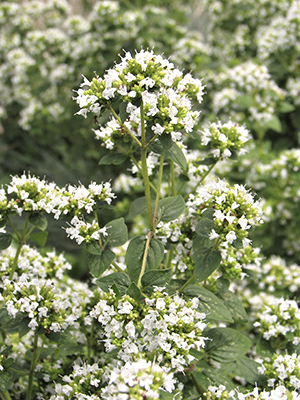 |
| variegata | variegata | 'Country Cream' |
Some Variegated Selections
When herbal programs look to expand their choices, they often turn to the variegated cultivars like Aurea, a nice, densely packed oregano with golden margins. These cultivars do double duty as both edible and decor plants since their foliage gives them an interesting all-season texture.
Among edible herbs, blooming is discouraged so sometimes you see flowers and sometimes you don’t. All the vulgar oreganos spread slowly when left to their wits. They fight the weeds and intertwine under and around tall denizens of the garden.
'Bellissimo' builds its display from long chains of very large brachts colored with a vibrant purple. The starts are offered as cuttings, so a production run has consistent size and habit within the crop.

About the Ornamentals
True ornamentals are bred to be good garden citizens. They spread wide like Bellissimo, or stand tall, like Drops of Jupiter but don’t get much beyond their mature size. Usually, they forego the insignificant flowers and plump up the color in the chains of bracts that line the stems, but exceptions exist.
For growers building out a retail product, higher light with cooler nights pushes the purple highlights into the bracts. If your house grown oreganos don’t take on the color you expect, toast them outside in full sun. After a few days the color will return. Also, just like ornamental cabbage, ornamental oregano has no flavor—it just looks good.
Bellissimo [Zone 6] — Domed with a wide base, Bellissimo goes all out as a basket product. Its bracts become the centerpiece, especially in bowl and pottery applications. Supplied by cuttings, the plant has all the consistency benefits of vegetative cloning. Textured bright purple bracts is this cultivar’s calling card.
Three other ornamental oreganos to consider. 'Drops of Jupiter' is excellent for landscapes. The cultivars throws all its stems upright for a very tall habit with lemon-lime foliage tipped with grape-colored balls. 'Kent's Beauty' has a basket-style oregano with pale green tassels ending in tips of pink. Rotkugel, a German vulgare, is known for its two-toned pink-on-red blossoms.
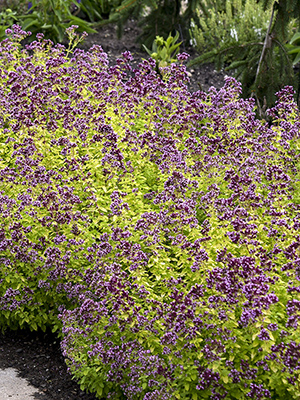 |
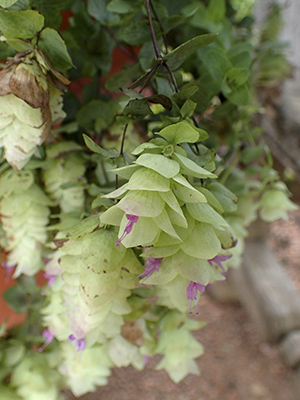 |
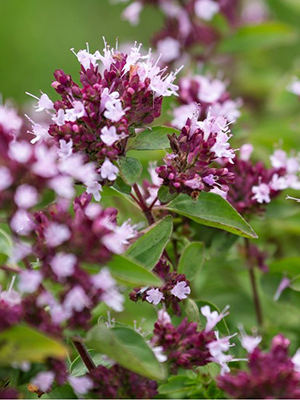 |
| 'Drops of Jupiter' | 'Kent’s Beauty' | 'Rotkugel' |
Drops of Jupiter [Zone 4] — Two-toned, two-season Drops of Jupiter has deeply purple bracts. Out of bloom, the yellow cast of the green leaves is bright enough to stand out from typical green surroundings. Strongly upright in habit, none of the stems lie flat to the ground. Leaves are long and oval, and actual flowers appear as little lavender dots against the darkly purple bracts. If you’ve seen catmint grow, bloom, and then grow out again for the remainder of the season, Drops of Jupiter does something like that.
Kent's Beauty [Zone 5] — Ornamental oreganos came into their own commercially with the introduction of Kent’s Beauty, a cultivar that bulks up by keeping its stems short. The hops-like calyxes exaggerate the texture of the habit and bloom mostly cream with tinges of purple and pink here and there. The beast of the group, it’s hardy even in Chicago, and grows very wide compared to Bellissimo or Kirigami. Since Kent’s Beauty is big enough to outgrow smaller decor pots, it’s best as an in-ground ornamental.
Rotkugel [Zone 5] — With a very traditional habit, upright Rotkugel is the darkest of all the ornamental oreganos. Here, the light lavender flowers show up alongside the dark purple bracts surrounding them. These color tips are heavy, so they sway and lean over a lot, giving the habit a mounding but sprawling look in a less formal style. Some firms favor that wild meadow look and Rotkugel fits right in with them, as it’s very much like the species in the wild.
Popular Articles
